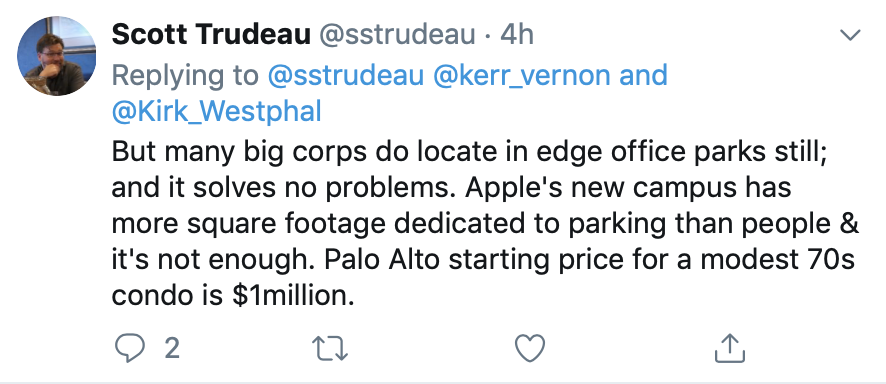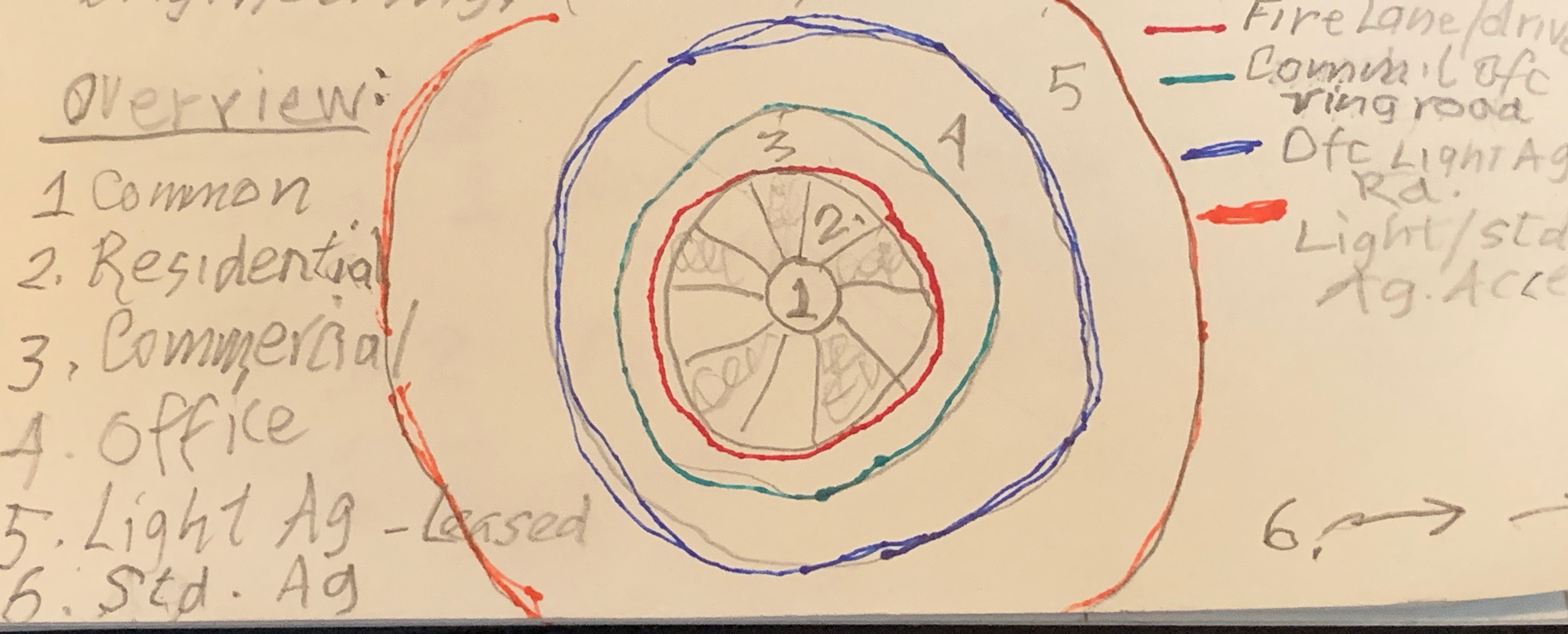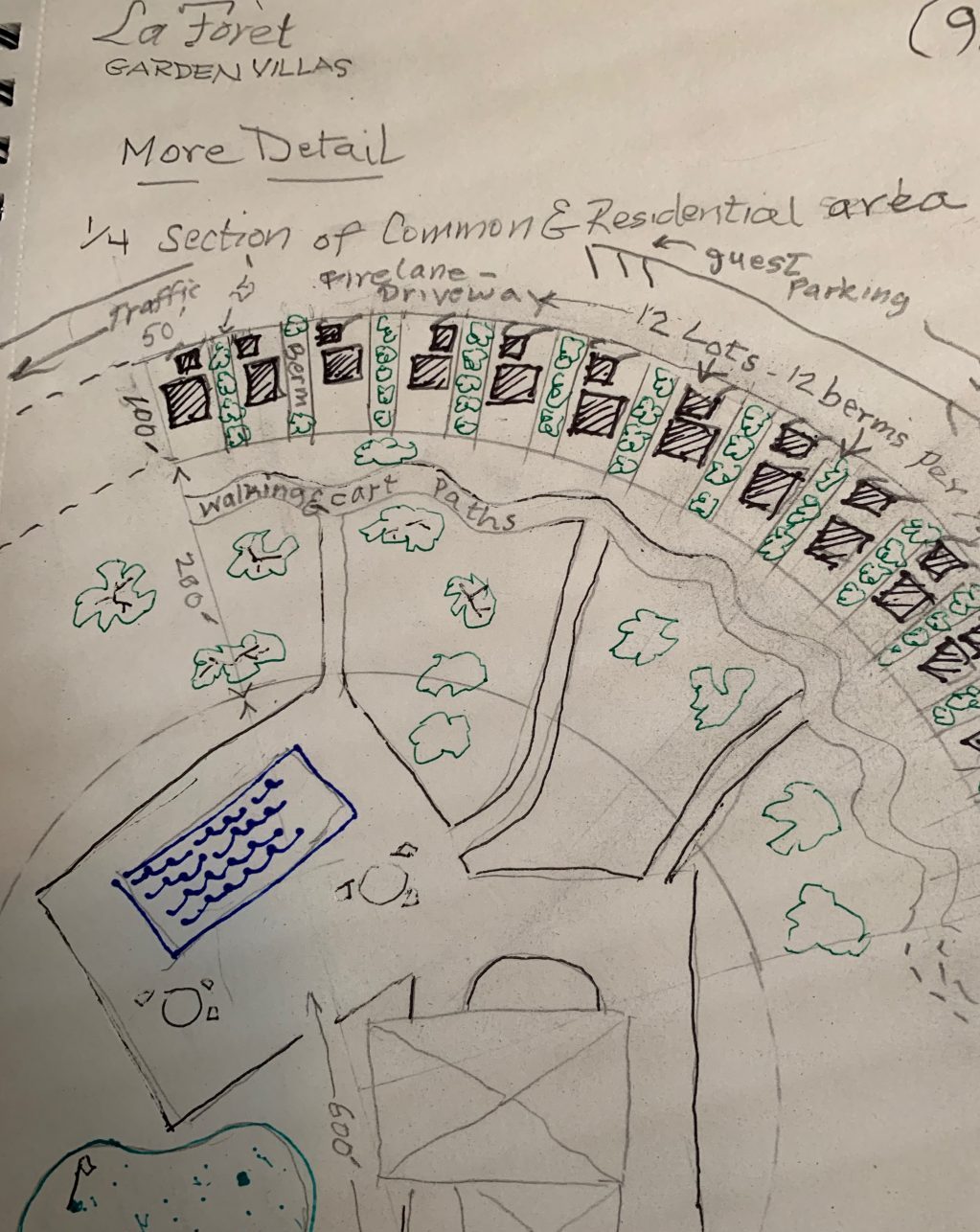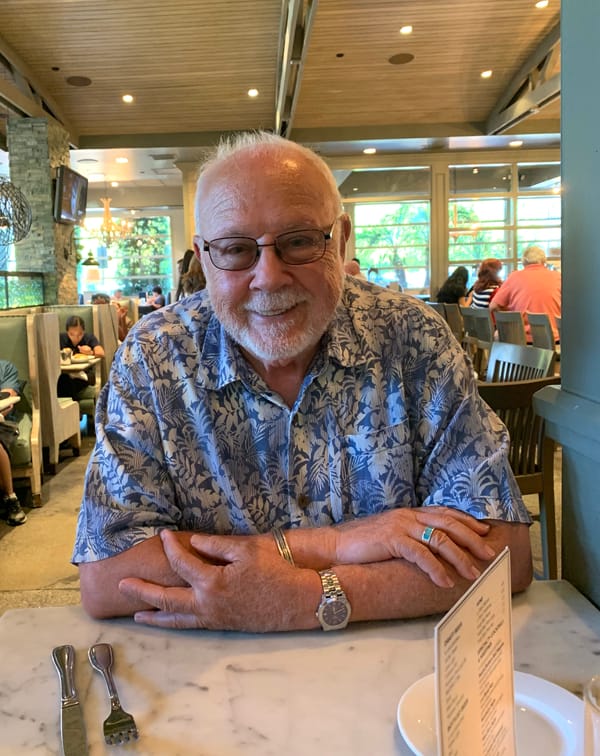Opinion | De-congesting Downtown
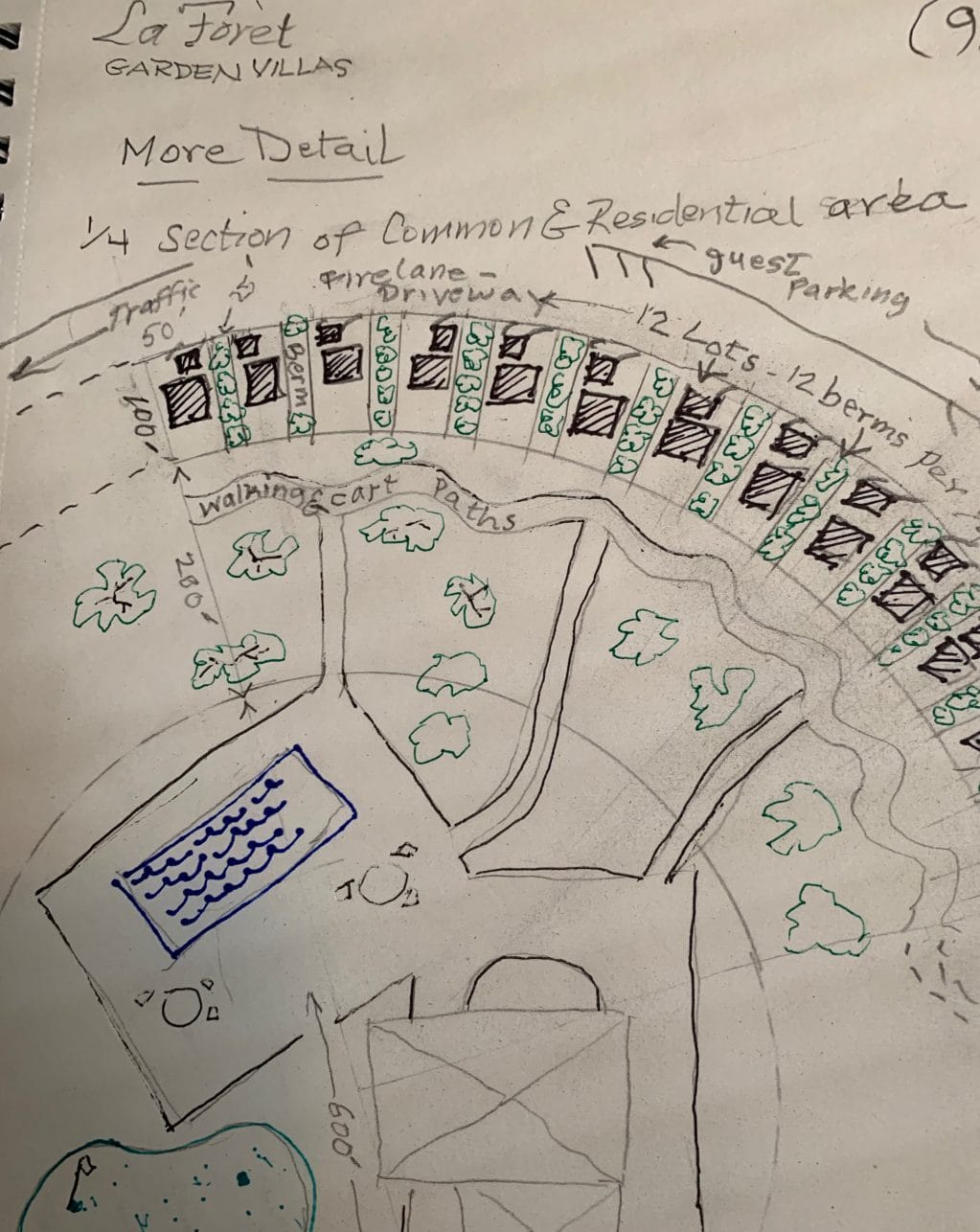
De-congesting Downtown
© 2019 Vernon Miles Kerr, vernonmileskerr.com, writersclass.net
Current widespread opinion seems to agree that city-centers, while cleaner and less crime-ridden than before, are becoming gentrification-magnets for large corporations, seeking the notoriety and cachet of downtown addresses. As a consequence, the number of commuter miles is skyrocketing, the amount of real estate for parking cars is increasing exponentially, and affordable housing within city limits is literally, disappearing. As pointed out recently on Twitter, by Scott Trudeau — referring to an experiment in Michigan called “Edge City” — just moving corporate HQs to the edges of town does not solve the displacement of people to affordable areas, farther and farther out into the hinterlands.
Not only do these “super-commutes” contribute to air pollution, especially when they involve miles of stop-and-go traffic, they also contribute to the demise of family life due to increasing time away from home. One-way commutes of 100 miles and more are common in Silicon Valley. That is a minimum of four hours daily added to a normal eight-hour workday. I know this from personal experience. Children are asleep when their parent leaves the house in the wee hours, and often asleep when the parent returns in the evening.
The following is a rough-draft of a proposal for a future Nodal Community near Modesto, California located even beyond the normal radius of the Silicon Valley Super-commute. When I say rough, I mean rough. It is transcribed from a hastily ripped off, pencil scribbled, early morning “eureka moment” of two weeks ago. This will be evident by the diagrams included:
La Forêt
GARDEN VILLAS
©2019 Vernon Miles Kerr, vernonmileskerr.com writersclass.net
Concept
Rural condominiums. Villas circling a park-like common area centered with meeting hall and adjoining kitchen area, swimming pool, putting green, library, billiards room, barbecue area, and a dining room with a well-equipped stage at one end.
The overall complex is wheel-like with a surrounding access road outside the condominiums and common area. The lots are pie-wedges. Every other wedge-lot is a forested berm with conifers and boulders, providing privacy between dwellings. Dwellings face the common area and have rear-facing utility yards and a garage, opening to the access road. The road itself is one-way with counter-clockwise traffic. It is wide enough to provide guest parking and a fire lane. Across the fire lane, moving outward from the center is a surrounding commercial ring of landscaping, interspersed with businesses which are strictly limited to those catering to needs of the residents of the Villas.
Beyond the commercial ring is a concentric ring road strictly zoned for offices suitable for non-manufacturing businesses, e.g. medical, educational, or software engineering (fiber optic trunk will be offered.)
Moving outward, another ring road separates the office zone from the light-agriculture zone. This light-ag zone features garden plots available to be leased to residents of the Villas. The Villas’ leased-land, light agricultural covenants, conditions and restrictions would allow equine stables, for both private and (very limited) commercial use e.g. boarding and livery.
Beyond the light-ag zone are the local, standard agricultural/ranching lands with a final ring road tht intersects with the county roads which typically follow township and section lines in rural North America.
Rough diagram:
Planning
Stage 1 Common and residential zone with surrounding utility/fire lane
Stage 2 Commercial and office zones
Stage 3 Light-ag and Standard-ag access roads
More Detail
Location
Central Valley of Northern California, in the Sierra Foothills above the fog line (approx. 2,000 ft. elevation,) possibly East of Oakdale, California. From a marketing standpoint this location enjoys the following:
- Close to large lakes, the Sierra Range
- Approx. two hours from San Francisco Bay Area
- Two hours from Sacramento and Fresno
- Three hours from Monterey Bay, Yosemite National Park
Market
Silicon Valley/San Francisco Bay Area retirees who are selling homes and desire relocating to a more tranquil setting without completely severing ties to the Bay Area/ San Jose Area.
Median Home Values as of October 2019
San Jose $990,700
Palo Alto $2,833,400
San Francisco $1,352,500
Fremont-Milpitas $1,080,000
Marin County $1,109,300
Source: Zillow.com
The population movement from the Greater S.F. Bay Area/Silicon Valley to the Modesto/Oakdale area has been on-going for the past three decades. Retirees from the Bay Area typically sell their homes, pay cash for a Central Valley home with sufficient left-over profit to make a handsome deposit into retirement reserves
During the 29 years, 1990 – 2019 the population of Greater Modesto (Modesto MSA) grew from 307,522 to 518,522, a 40% increase. (Source: Wolfram|Alpha.com)This trend continues roghtly on-par with rising home values in the Bay Area.
Beyond increases from retirees are those caused by a new class, locally known as “Super-Commuters.” Tens of thousands of these Central Valley homeowners can be seen crossing the Coast Ranges via the Altamont Pass, in a near-continual flow, five days weekly, headed for Bay Area jobs, mostly in the Tech Sector.
Philosophy
Society, in general, needs to move away from the urban-centric model where clusters of office and industrial enterprises drive the cost of real estate so high as to preclude land being available for housing. La Forêt is conceived to be a single node in a possible future network of widely-separated multi-use communities. Thanks to high-speed data transfer, telecommuting, video-conferencing and other technologies, there is little or no need to concentrate “Information Age” industries into densely compacted urban centers, like San Francisco or New York. These non-manufacturing occupations can just as easily and profitably be conducted from small offices adjacent to a residential hub, or node.
Beyond La Forêt
Beyond La Forêt one can imagine future nodes being developed, and as they proliferate, they might be interconnected by hyper-loop or other high-speed rail. Due to their low impact on surrounding land, nodes could be located in current Ag-only (AE) or Government Forest service land, areas that are now generally off-limits to development. Passing legislation to relax prohibitions for non-ag non-governmental development would allow further de-centralization of population.
